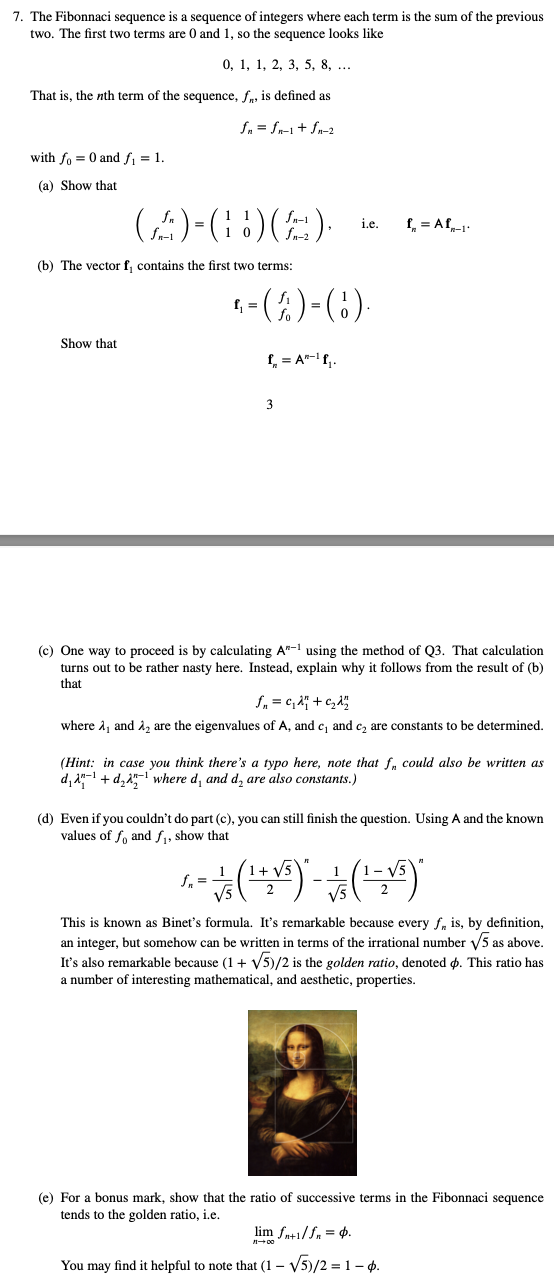Home /
Expert Answers /
Advanced Math /
the-fibonnaci-sequence-is-a-sequence-of-integers-where-each-term-is-the-sum-of-the-previous-two-the-pa563
(Solved): The Fibonnaci sequence is a sequence of integers where each term is the sum of the previous two. The ...
The Fibonnaci sequence is a sequence of integers where each term is the sum of the previous
two. The first two terms are 0 and 1 , so the sequence looks like
0,1,1,2,3,5,8,dots
That is, the nth term of the sequence, f_(n), is defined as
f_(n)=f_(n-1)+f_(n-2)
with f_(0)=0 and f_(1)=1.
(a) Show that
((f_(n))/(f_(n-1)))=([1,1],[1,0])((f_(n-1))/(f_(n-2))), i.e. ,f_(n)=Af_(n-1)
(b) The vector f_(1) contains the first two terms:
f_(1)=((f_(1))/(f_(0)))=((1)/(0))
Show that
f_(n)=A^(n-1)f_(1)
(c) One way to proceed is by calculating A^(n-1) using the method of Q3. That calculation
turns out to be rather nasty here. Instead, explain why it follows from the result of (b)
that
f_(n)=c_(1)\lambda _(1)^(n)+c_(2)\lambda _(2)^(n)
where \lambda _(1) and \lambda _(2) are the eigenvalues of A , and c_(1) and c_(2)f_(n) could also be written as
d_(1)\lambda _(1)^(n-1)+d_(2)\lambda _(2)^(n-1) where d_(1) and d_(2) are also constants.f_(0) and f_(1), show that
f_(n)=(1)/(\sqrt(5))((1+\sqrt(5))/(2))^(n)-(1)/(\sqrt(5))((1-\sqrt(5))/(2))^(n)
This is known as Binet's formula. It's remarkable because every f_(n) is, by definition,
an integer, but somehow can be written in terms of the irrational number \sqrt(5) as above.
It's also remarkable because (1+\sqrt(5))/(2) is the golden ratio, denoted \phi . This ratio has
a number of interesting mathematical, and aesthetic, properties.
(e) For a bonus mark, show that the ratio of successive terms in the Fibonnaci sequence
tends to the golden ratio, i.e.
\lim_(n->\infty )(f_(n+1))/(f_(n))=\phi
You may find it helpful to note that (1-\sqrt(5))/(2)=1-\phi .